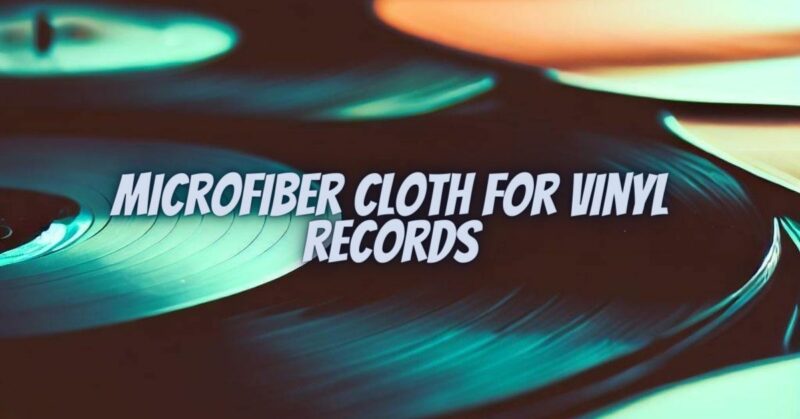Vinyl records are beloved for their rich, analog sound, but they demand proper care and maintenance to preserve their quality and longevity. One essential tool in the vinyl enthusiast’s arsenal is the microfiber cloth. In this informative article, we’ll explore the benefits of using a microfiber cloth for cleaning vinyl records, how to use it effectively, and why it’s a must-have for vinyl collectors.
The Role of Microfiber Cloths in Vinyl Record Care
Microfiber cloths have become a staple in the world of vinyl record collectors and audiophiles for several compelling reasons:
- Gentle and Non-Abrasive: Microfiber cloths are incredibly soft and non-abrasive. They are designed to be gentle on delicate surfaces, making them ideal for use on vinyl records without the risk of scratching.
- High Absorption: Microfiber is composed of tiny fibers, much finer than human hair. This structure provides excellent absorption capabilities, allowing it to trap and hold onto dust, dirt, and moisture effectively.
- Lint-Free: Microfiber cloths are virtually lint-free, ensuring that they won’t leave behind fibers or debris on the vinyl surface that can affect playback or collect more dust.
- Static Reduction: Microfiber’s natural properties can help reduce static electricity on the vinyl surface, which is known to attract dust and affect sound quality.
- Versatility: Microfiber cloths can be used for both dry and slightly damp cleaning, making them versatile tools for various cleaning needs, from dust removal to deep cleaning.
How to Use a Microfiber Cloth for Vinyl Record Cleaning
Here’s a step-by-step guide on how to use a microfiber cloth effectively to clean vinyl records:
- Inspect the Record: Before cleaning, visually inspect the vinyl record for visible dust, fingerprints, or smudges.
- Dry Cleaning:
- For light dust or surface particles, gently wipe the vinyl in a circular motion using a clean, dry microfiber cloth. Start from the outer edge and work your way toward the center.
- Damp Cleaning:
- If the record requires deeper cleaning, lightly dampen the microfiber cloth with distilled water or a dedicated vinyl record cleaning solution. Ensure the cloth is not dripping wet; it should be slightly damp.
- Gently wipe the vinyl surface in a circular motion with the dampened cloth. Again, start from the outer edge and work your way toward the center.
- Dry the record thoroughly with a clean, dry microfiber cloth to prevent moisture-related issues.
- Anti-Static Brush: After cleaning, consider using an anti-static brush to remove any remaining dust and to reduce static electricity on the vinyl surface.
- Storage: Store the cleaned record in an anti-static inner sleeve and an outer polythene sleeve to protect it from dust and debris.
Additional Tips and Considerations
- Always handle vinyl records by their edges to avoid transferring oils and dirt from your fingers to the playing surface.
- Keep your microfiber cloth clean by washing it regularly without fabric softener, which can reduce its effectiveness.
- For valuable or rare vinyl records, consider investing in a dedicated record cleaning brush or machine for more thorough cleaning.
A microfiber cloth is an indispensable tool for any vinyl record collector or enthusiast. Its gentle and non-abrasive properties, along with its excellent absorption capabilities, make it perfect for removing dust, dirt, and fingerprints from your vinyl collection. By incorporating a microfiber cloth into your vinyl record maintenance routine, you can ensure that your records remain in pristine condition, allowing you to enjoy their warm, analog sound for years to come.


